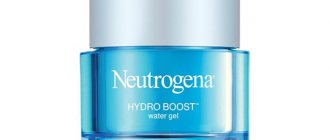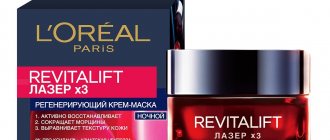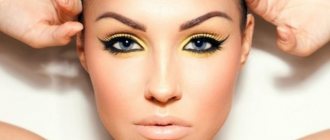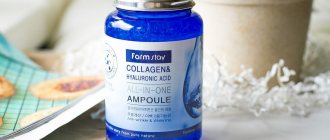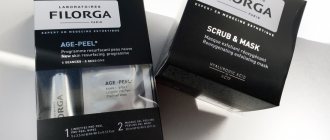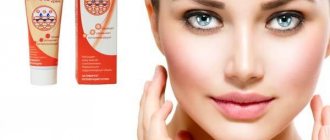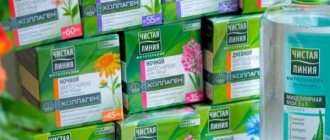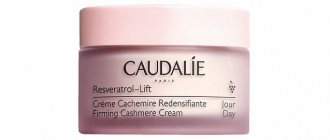Updated: 03/03/2021 11:26:39
Expert: Daria Alekseevna Litvinova
*Review of the best according to the editors of expertology.ru. About the selection criteria. This material is subjective in nature, does not constitute advertising and does not serve as a purchase guide. Before purchasing, consultation with a specialist is required.
For owners of dry skin, it is important not only to choose a suitable face cream that can improve the condition of the dermis for a short time, but also to stabilize its condition in the long term, eliminating the causes of dryness. We will talk further about the causes of the condition, methods of treating it according to the recommendations of dermatologists, and also consider the best creams for dry skin.
Causes of dryness
In search of possible causes of dry skin, we studied research materials from Acta Biomedica Scientifica, published in the Siberian Biomedical Journal and interviews with cosmetologists, founders of the “star” cosmetology center in Moscow.
The causes of dry skin are not always superficial - more often what we see on the surface of the dermis is a consequence of some processes occurring in the body.
The main causes of dryness of the stratum corneum of the epidermis:
- Using low-quality cosmetics or improper preparation for applying them.
- Skin diseases - eczema, psoriasis, dermatitis, etc., they lead to disruption of the integrity of the protective layer and loss of moisture as a consequence.
- Improper care - using inappropriate cleansers, creams, or the absence of them and frequent washing with hard water.
- Age-related changes associated with hormonal levels, decreased lipid synthesis, impaired hydration of the stratum corneum as a consequence of deterioration of microcirculation of moisture in the dermis.
- Taking medications, in particular glucocorticosteroids, which have a destructive effect on the upper layer of the skin.
- Somatic diseases - diabetes, hepatitis, liver cirrhosis and other pathologies of internal organs also lead to dry skin.
- Genetic predisposition or congenital pathologies that cannot be treated are various genodermatoses.
- Dry indoor air during the heating season and outdoor air during the hot summer can also provoke drying of the stratum corneum.
All these reasons affect the condition of the mentioned stratum corneum, which itself contains some moisture. Normally, cells produce fat (sebum), which provides natural hydration. The above reasons can affect the mantle and disrupt its functioning, the amount of moisture in the cells decreases, as a result, the protective layer of the skin deteriorates, it becomes permeable to viruses and toxins. If you do not start treating the resulting dryness in a timely manner, you can develop chronic diseases of the epidermis, inflammation, hypersensitivity, irritation at rest and during manipulation - washing, applying cosmetics, etc.
Treatment
The principles of treatment and care for dry skin were discussed in the author’s column buro247. According to them, it is necessary to moisturize the epidermis in all cases, even when the cause of the condition is a consequence of the work of internal organs, taking medications and other unobvious factors.
Humidifiers are divided into 2 types:
- Hydrophilic ones are designed to retain moisture in the upper layer of the skin, that is, only in the protective mantle.
- Hydrophobic or occlusive form a membrane on the surface of the dermis that limits the evaporation of moisture. They also eliminate itching, inflammation, are suitable for emergency intervention, and are used for rehabilitation therapy after injuries, treatment, and peeling.
The protective skin barrier is generally permeable to hydrophobes, so in care and therapy it is better to give preference to the second group of moisturizers. However, with all their advantages, they do not act on the cause of dryness. Occlusive components include mineral and vegetable oils, silicones, waxes and animal fats.
In 2003, Peter Egra and Roderick MacKinnon received the Nobel Prize for the discovery of the unique substances aquaporins, a new generation of drugs for the treatment of dry skin, which are proteins that transport water into the cell.
Among the many active ingredients for moisturizing, the cosmetologist, after conducting a comprehensive examination of the skin and familiarizing himself with the results of diagnostics of the body, will prescribe measures and medications for the treatment of the epidermis. Only a specialist will be able to correctly combine active substances and combine them within one therapy, because not all substances are compatible and can complement each other.
Tips from cosmetologists
Some tips for caring for dry skin:
- Be careful when peeling at home - no matter how gentle it is, peeling substances do not contain enough moisturizing substances, and abrasives injure the skin.
- Do not use mono-oils - in their pure form, they mostly dry out the skin. Plant oils are good if they are mixed with other components, for example, in a cream.
- Avoid creamy powders and foundations - they tend to draw moisture from the upper layer of the skin.
- Eliminate cleansers from your care, use regular soap without fragrance, and after cleansing, apply a nourishing cream to your skin, not a moisturizer.
- Take flaxseed oil and evening primrose oil internally - they improve the condition of the skin from the inside, saturating it with vitamins and omega acids.
- Make masks 2 times a week. Use special nutritional formulations or prepare a mixture of yolk, white grapes, sour cream and a couple of drops of peach/apricot oil.
Several recipes for making homemade creams
Complex composition:
- 1 tsp melt lanolin;
- 2 tbsp. l. Wax, heat everything in a water bath;
- 2 tbsp. l. Unrefined olive oil;
- In another bowl, mix 2 grams of borax. with tsp glycerin, add 60 ml. H2O and 2. Tbsp. jasmine oil
Mix both mixtures after heating, cool, and beat. An excellent cream for dry skin that works 24 hours a day.
Cucumber
3 tbsp. Mix cucumber juice with egg yolk. In a water bath, prepare a teaspoon of bee juice and glycerin, add 2 tsp. olive oil. Mix, cool, beat.
Making cream at home is not too difficult, the main thing is to combine the ingredients correctly and not violate the recipe. Lanolin and glycerin are sold in pharmacies, as are oils for facial skin rejuvenation. Try also making a mask with glycerin from the article.
Chamomile
For ½ cup of boiling water, take tbsp. spoon of chamomile, leave for an hour, then add to 2 table. spoons of chamomile infusion, half a teaspoon of vegetable glycerin.
Mix separately tbsp. butter, 1 tsp castor oil, and add 3 drops of geranium, patchouli or orange oil.
After this, mix chamomile with oils and beat. Store in the refrigerator and use within 5 days.
Peach
- 1 tbsp. l. Peach juice;
- 1. Ch. Spoon of melted wax;
- Borax on the tip of the knife;
- 2. tsp. H2O.
Mix everything.
Home-made creams are quite effective, but are not shelf-stable, so if preparing them does not bother you, then you can use homemade products instead of spending money on store-bought ones. You can also choose anti-peeling masks in this material.
Rules for choosing a cream
The ideal option when choosing a cream for dry skin is to consult a cosmetologist. The specialist, first of all, will diagnose the condition of the epidermis, determine the causes of dryness, and based on the data obtained, give recommendations on the use of either a specific brand of skincare product, or on the active components that will need to be found in the composition when searching for “your” product.
If a cosmetologist is not included in your plans, consider several criteria for choosing a cream yourself.
Compound
The reasons for the lack of moisture in the skin are different; to eliminate each, different methods and active components of cosmetic products are used. In cosmetology, a list of substances has been defined that can improve the condition of dry dermis:
- Hyaluronic acid is a kind of natural reservoir for moisture; its production can be disrupted for various reasons, which leads to dryness.
- Glycerin also has moisture-retaining properties; it quickly softens dry and irritated epidermis.
- Vegetable oils - camphor, flaxseed, coconut, almond, apricot, grape seed, olive, corn, avocado and some others.
- Ceramides are substances similar in composition to skin proteins; they help maintain the normal functioning of dermal cells.
- Collagen and elastin are proteins that improve the natural structure of the skin, they stimulate the normal functioning of the tissue.
- Squalane does not moisturize cells itself, but promotes moisture retention in the upper epidermal layers.
- D-panthenol is panthenolic acid used to treat dryness and various skin defects.
Contains a good cream
which is intended to moisturize, there are sure to be several components from this list. Almost all products in the inexpensive segment contain glycerin, extracts, and plant oils. Until recently, hyaluronic acid was found only in mid- and premium-segment skincare products, but the technology has reached the supermarket market.
What definitely should not be in a cream for dry skin are alcohols such as alcohol, ethanol, ethyl alcohol, SD alcohol or alcohol denat, isopropanol, isopropyl alcohol or IPA, methanol, methyl alcohol and benzyl alcohol - these substances destroy the upper lipid layer , that is, they contribute to even more moisture loss, which is only permissible for oily dermis. But it is quite difficult to prepare a cream without alcohol compounds - they often act as emulsifiers, so in high-quality products they are replaced with fatty alcohols - cetearyl alcohol, stearyl alcohol, cetyl alcohol, they are obtained from plant raw materials. The substances do not dry, but condition the skin and hair and are well accepted by cells.
Tara
Many creams are sold in jars - this is a convenient packaging, but not the most successful - in a nutritious, fatty environment, bacteria that get inside thrive well, which are not as dangerous as the toxins they secrete. The best option is to use a spatula to remove the cream from the jar so that the bulk of the product does not come into contact with the skin at this moment. The device may be hidden by the manufacturer under a lid; if it is not there, it is advisable to use a separate spatula or even a spoon.
- A tube is also a good solution for storing cream. In it, the product has less contact with air, which means it does not oxidize. In addition, the dispenser of such containers minimizes contact of the product with the skin, and the introduction of bacteria into the main volume is reduced to zero.
- The ideal container is a bottle with a dispenser. It completely eliminates contact of the cream with air and helps to collect the right amount of product.
Important:
The production date and expiration date must be printed on the tube/bottle or jar and be legible.
Special properties
What else you need to pay attention to:
- Age category: many creams are developed taking into account this parameter, which corresponds to a number of standard problems with the dermis. Typically, age is indicated by a range or lower limit - 25+, 30+, 45+, etc.
- The presence of UV filters is necessary not only in summer; the sun is quite aggressive even in winter, when the sky is clear. Here we recommend taking into account the climatic features of the area.
- The special functions of the cream are to fight inflammation and acne; such products contain special components.
Day Night
Not all women understand the difference between night and day cream, so they use one universal product, but do not always see the desired effect. What is the difference between these funds:
The day cream moisturizes the skin in such an amount that the effect is enough for the day. Its task is to soothe the epidermis, prepare it for applying makeup and protect it from irritating factors - weather, ecology.
Night cream is designed to nourish cells with moisture and nutrients.
Thus, working in tandem, night and day creams can give a more expressive effect of moisturizing and smoothing the skin. A universal product is not capable of this, since it cannot have all of the listed properties at the same time - the cream either nourishes the skin, or refreshes and protects.
You can choose a cream according to all the rules, but in some cases it may simply not suit a particular skin - it may react negatively to individual components, and the desired effect will not be achieved. If you have the opportunity to purchase a sample of the cream, take advantage of it; a couple of grams will definitely be enough to determine how suitable the product is for you.
Types and composition
There are several main types of creams:
- moisturizing;
- nutritious;
- daytime;
- nocturnal
Fat and nourishing cream has a thick composition that includes vitamins and minerals. It reliably protects the skin from wind and cold, ideal for use in winter. Moisturizing creams are equipped with a UV filter, have a light texture, are quickly absorbed and protect the skin from drying out and sunburn. If you have sensitive skin, then choose a cream that does not contain irritants and some additives.
Dry problem skin requires the use of a cream with anti-inflammatory components in its composition, and the best helper is depanthenol. It effectively moisturizes and removes redness and rashes at any age. Day cream is able to form a protective film from external influences and aggressive sunlight, but night cream, in turn, stimulates the production of collagen and elastin. They will prevent skin aging and smooth out small expression wrinkles.
Rating of the best creams for dry skin
| Nomination | Place | Name | Price |
| The best inexpensive creams for dry skin | 1 | Natura Siberica for dry skin Nourishment and hydration | 443 ₽ |
| 2 | BOTAVIKOS Moisturizing & Care | 247 ₽ | |
| 3 | Vitex Pharmacos Dead Sea for dry, very dry and atopic skin | 152 ₽ | |
| 4 | CeraVe for dry to very dry skin of the face and body | 389 ₽ | |
| The best creams for dry skin in the mid-price segment | 1 | AVENE Tolerance Extreme | 1 480 ₽ |
| 2 | Vichy Aqualia Thermal Rich Cream Face Moisturizer with Hyaluronic Acid | 1 125 ₽ | |
| 3 | Elizavecca Aqua Hyaluronic Acid Water Drop Cream | 478 ₽ | |
| 4 | Librederm Hyaluronic Moisturizing Cream for face, neck and décolleté | 777 ₽ | |
| 5 | Kora Phytocosmetics for dry skin with argan oil for face | 586 ₽ | |
| 6 | D'oliva with wheat germ oil for dry and sensitive skin | 969 ₽ | |
| The best premium quality creams for dry skin | 1 | Caudalie Resveratrol Lift Firming Cashmere Cream | 4 211 ₽ |
| 2 | La Roche-Posay Hydreane Extra Riche for sensitive skin prone to dryness | 1 450 ₽ | |
| 3 | Vichy Idealia for dry skin | 2 060 ₽ | |
| 4 | AVENE Hydrance Optimale Riche for dry skin | 1 216 ₽ | |
| 5 | Bioderma Sensibio Rich Soothing Cream | 1 156 ₽ |
What should be included in homemade creams?
If desired, you can make a cream for dry skin at home. The composition should include moisturizers, oils to improve nutrition, and vitamins.
Effective humidifiers:
- Jojoba oil;
- Avocado;
- Olive.
In addition, the presence of vitamins A, C, E, and B vitamins is desirable. You can use honey and herbs. If your skin is very sensitive, it is better to use hypoallergenic components. Hyaluronic and glycolic acid will retain moisture, and ceramides will eliminate flaking.
The best creams for dry skin in the mid-price segment
AVENE Tolerance Extreme
Rating: 4.9
The best cream, according to our experts, is AVENE Tolerance Extreme, popular in Russia. In addition, the product of the French brand was included in the rating of the American online magazine as one of the most effective for dry skin care, according to leading world-famous dermatologists. The active moisturizing component is glycerin, which is light and does not clog pores, unlike vegetable oils. Thermal water also serves as a moisturizer, and is absorbed by cells much better than regular water - it has an optimized structure. The cream is perfect for sensitive skin due to the absence of fragrances, and titanium oxide promotes light whitening and evens out the tone of the dermis.
Women who use AVENE Tolerance Extreme cream note its pleasant consistency, ease of application and ability to truly moisturize.
Advantages
- Light texture;
- Moisturizing with a cumulative effect;
- Low consumption;
- Does not leave a greasy shine;
- There are no allergens in the composition.
Flaws
- Not defined.
conclusions
- For very dry epidermis, it is best to use more nourishing components - oils, moisturizers such as glycerin, which retain moisture inside.
- For irritation and dryness, it is necessary to use herbal ingredients such as chamomile, cucumber, nettle, and birch.
- Dry skin can appear from too much exposure to sunlight, so do not forget to use dexpanthenol and apply sunscreen.
- Since it is difficult to add these substances to homemade cream yourself, they must be used separately.
- Pharmacy products are safer than mass market creams, since they have virtually no fragrances and contain components that do not cause allergies.
